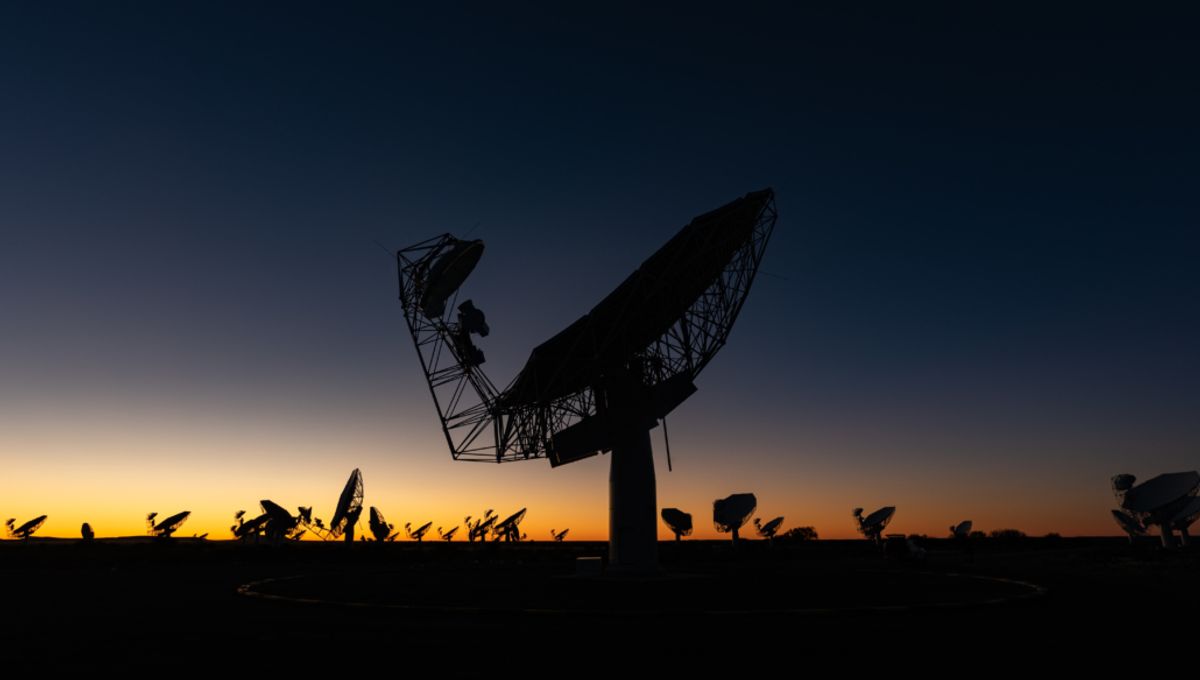
The search for alien civilization is about to be expanded massively. The Breakthrough Listen initiative has announced a new collaboration with the MeerKAT observatory in South Africa to target over 1 million nearby stars in the search for technosignatures, the potential evidence of extraterrestrial intelligence.
With the inclusion of this incredible observatory, which is the largest radio telescope in the Southern Hemisphere, the number of targets will increase by a factor of 1,000. Thanks to the collaboration between the Breakthrough Listen team and the South African Radio Astronomy Observatory (SARAO) engineers, the telescope – which is made up of 64 antennas – will provide data almost 24 hours a day, seven days a week, for two years.
“I am very excited to be able to conduct a search for technosignatures using one of the most sensitive telescopes in the world,” Dr Cherry Ng, Breakthrough Listen’s Project Scientist for MeerKAT, said in a statement.
“It will take us just two years to search over one million nearby stars. MeerKAT will provide us with the ability to detect a transmitter akin to Earth’s brightest radio beacons out to a distance of 250 light-years in our routine observing mode.”
This search will complement the work in progress being carried out with the Green Bank Telescope (GBT) in the USA, the Parkes Telescope in Australia, and other telescopes around the world. Both GBT and Parkes required the motion of the antenna to point at targets, something that won’t be required in the MeerKAT program.
“MeerKAT consists of 64 dishes, which can see an area of the sky 50 times bigger than the GBT can view at once,” explained Breakthrough Listen Principal Investigator Dr Andrew Siemion.
“Such a large field of view typically contains many stars that are interesting technosignature targets. Our new supercomputer enables us to combine signals from the 64 dishes to get high-resolution scans of these targets with excellent sensitivity, all without impacting the research of other astronomers who are using the array.”
One of the first targets that the observatory will observe is a familiar one: Proxima Centauri is the closest star to Earth, with two planets in the habitable zone, and has long been considered a strong candidate for potential life.
“MeerKAT has a remarkable combination of sensitivity and survey speed, which makes it a wonderful telescope for SETI,” added Dr Fernando Camilo, Chief Scientist for SARAO. “The telescope was planned and developed here in South Africa, and it’s very exciting that young South Africans will have the chance to be involved at the forefront of the search for life beyond Earth.”
The Breakthrough Initiatives are a series of different programs focusing on the different aspects of life in the cosmos funded by the Breakthrough Foundation established by Yuri and Julia Milner.
Source Link: Over 1 Million New Stars Will Be Targeted For Alien Life Search